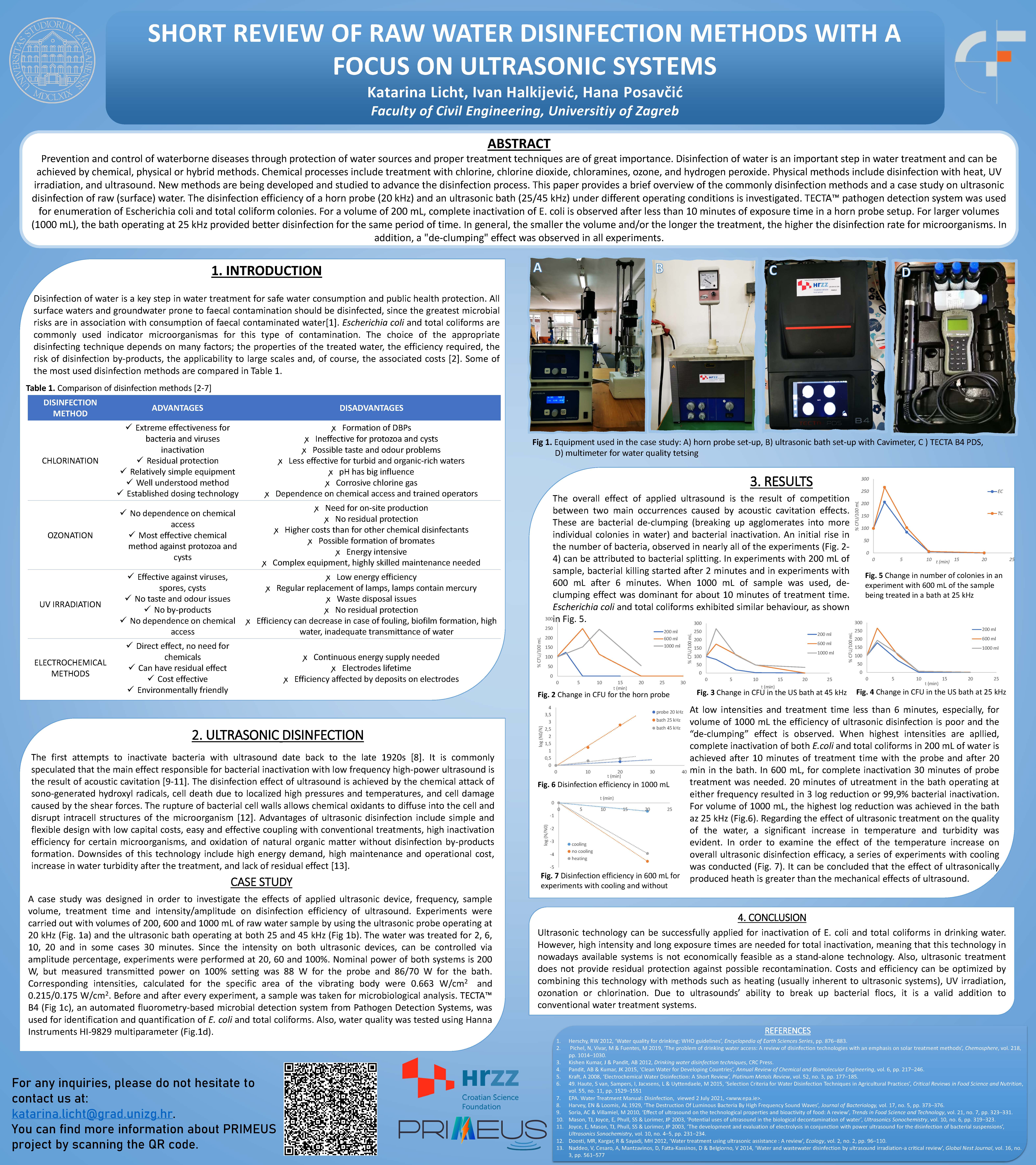Potable water is water of acceptable quality in terms of physical, chemical, and microbiological parameters for safe drinking. Although it is a basic human need and right, ensuring access to drinking water has been and continues to be a challenge. Waterborne diseases are still an issue in many developing countries and deaths from diseases such as cholera, typhoid and diarrhoea remain high. Their prevention and control through protection of water sources and proper treatment techniques are of great importance. Disinfection of water is an important step in water treatment and can be achieved by chemical, physical or hybrid methods. Chemical processes include treatment with chlorine, chlorine dioxide, chloramines, ozone, and hydrogen peroxide. Physical methods include disinfection with heat, UV irradiation, and ultrasound. New methods are being developed and studied to advance the disinfection process. This paper provides a brief overview of the most commonly used disinfection methods and a case study on ultrasonic disinfection of raw (surface) water. The disinfection efficiency of a horn probe (20 kHz) and an ultrasonic bath (25/45 kHz) under different operating conditions is investigated. TECTA™ pathogen detection system was used for enumeration of Escherichia coli and total coliform colonies. For a volume of 200 mL, complete inactivation of E. coli is observed after less than 10 minutes of exposure time in a horn probe setup. For larger volumes (1000 mL), the bath operating at 25 kHz provided better disinfection for the same period of time. In general, the smaller the volume and/or the longer the treatment, the higher the disinfection rate for microorganisms. In addition, a “de-clumping” effect was observed in all experiments.
